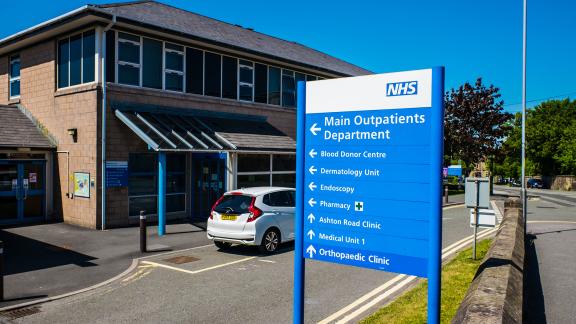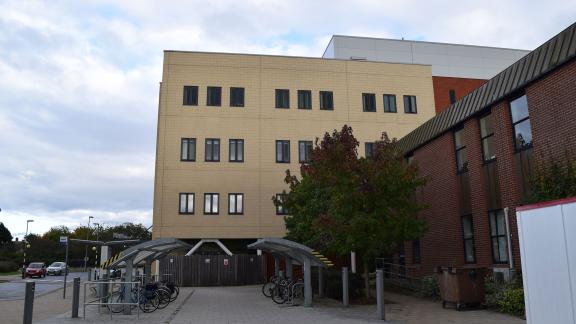Planning for the NHS estate of the future

Key points
- There can often be a disconnect between service commissioning and estates planning, with services planned first and the space in which they are provided left as an afterthought. This leads to poorly located and expensive care.
- To tackle this issue, the NHS Confederation, in partnership with Darwin Group, convened NHS leaders from provider and commissioning organisations for a roundtable on the future of the NHS estate. Amid much policy change, including the development of ICS Infrastructure Strategies and the 10 Year Health Plan, the group discussed what might be needed to drive cultural changes to the way NHS organisations come together to use their physical resources more effectively.
- The discussion identified three core issues:
- Innovation and isolation – The growing scale of need across the NHS estate is, paradoxically, driving greater collaboration and innovation between providers, and also causing providers to retreat into their organisational silos.
- Empty, underused and disconnected – While much discussion is rightly dedicated to the limitation of the existing estate and the growing maintenance backlog, system leaders need to dedicate more time to future planning to better use existing estate for a resource-constrained service.
- Strategic, spatially aware service planning – Better spatial planning will help system partners work more effectively together to plan their estates. Understanding the changing demographics of their population and their associated needs will allow leaders to modify the existing estate to efficiently house the services this changing population needs.
A burning platform for change
From GPs in converted houses unsuitable for providing care, to acute hospitals with over £0.5 billion in maintenance, it was widely accepted by NHS providers of all sizes at the roundtable that they need to do something differently. Constraints on capital investment are a significant factor behind the growth in UK healthcare productivity, averaging just 0.9 per cent growth per annum over the past 25 years.
For primary care, this includes an acceptance that the partnership no longer needs to be a sole building owner, with acute providers investing in the development of the primary care estate in return for an ownership stake. While more work is required to establish the principles of a good partnership, transitioning away from sole partnership ownership could go some way to mitigating the risks associated with estate ownership that has long been a factor in the decline of GPs taking on partnerships. For larger NHS providers, this includes planning with partners to avoid duplicated service provision in each catchment and the capital costs that are associated with this.
Too often though, providers are still constrained by their operating environment. Primary care providers operating in an unviable estate are often unable to move into an integrated care board-funded building because the remaining service charges would render them financially unviable.
Round pegs in square holes – planning services first and locating them second is leading to poorly located, expensive care
The group discussed how the current culture of health service planning often leads to a divorce between service commissioning and estates planning, with services planned first and the space where they will be provided from left as an afterthought. The implication of this lack of coordination was discussed, playing out in three ways:
- Co-located, but uncoordinated services – When services are commissioned, often this is done on a single service basis, and their clinical and administrative pathways are prioritised, with their location as a secondary consideration or afterthought. As a result, services can end up being commissioned into the same location as other, potentially complementary, services, but not have the physical infrastructure to be coordinated. In some instances, multiple communications systems also mean that direct communication between co-located departments is not actually possible.
- Void spaces – Owing to this lack of coordination between service commissioning and spatial planning, services can often be forced to move to find a building more suitable to their needs. In this instance, as the commissioner, the ICB remains liable for the rent of this ‘void space’ regardless of whether it is owned by another NHS organisation, a wider public sector body, or a private sector company. This incurs additional cost across the system, reducing resources that can be used elsewhere in the system.
- Underused assets - The final cost is underused valuable property assets. Roundtable participants described a situation where space is either used inefficiently or not at all. This means that NHS organisations are either getting a lower productivity return on their estates investment or are sitting on valuable assets that could be sold to release revenue for use elsewhere. As the NHS Confederation sets out in Pioneers of Reform, in order to achieve this investment will need to be made in professional capabilities, potentially through the devolution of expertise, resources and assets from NHS Property Services to systems.
Spatial commissioning – a new priority for systems
As the government presses ahead with the left shift and ICBs move towards a new role as strategic commissioners, participants described a need to more accurately capture the specialism of spatial planning in their service design.
Comments were also shared around the link between having an understanding of how population distribution maps against the needed services, and the space available to deliver these services from. For example, while some services will be commissioned upwards of 300 times across a single system, for others it will only be possible to commission a service once across multiple providers. It is therefore important for the ICB to be sure that this service is located in buildings that are accessible to the intended services users and that meet their needs.
Crucial to this planning is understanding how the population will change. One leader described how their population is forecast to grow by 250,000 people over the next ten to 15 years, and that this is the starting point for thinking about developing their estate. From here, system partners can determine what services this population is likely to need and where these services are best provided from.
At this point, system leaders need to make the tough decisions about what this means for their assets. This might include mandating the use of certain premises as part of service commissioning, purchasing estates with high utility and disposing of those with high financial value but low utility.
At present, NHS organisations are limited in the tools they have at their disposal to understand estate u across the system, relying on booking-system data to determine the use of space. Participants also discussed how professional roles, such as building management, can be developed so that the future needs of spatial commissioning can be embedded in an enhanced specialist workforce.
Where next? The small matter of money
To enable the changes in strategic planning, this will need to be backed with funding and time to realise changes. However, participants reported that they still do not have the option to work to the four-year capital cycles that are described in the constitutional stands. Instead, estate leaders are caught in the “perverse situation” where they own the risks in their estates but do not have control of the risk prioritisation.
Often, such prioritisation of risk is directed by the national level to specific cases when funding is made available. A recent example of this was the announcement of £750 million capital funding to support the maintained backlog. While certainly welcome, this money remains nationally directed. Local leaders shared with the NHS Confederation that they would have prioritised other parts of backlog spending if they had been asked.
Roundtable participants also noted that as the shift from analogue to digital takes place, physical infrastructure will need to be designed to complement the delivery of digital services, and that in some instances, digital services can also offer a solution to the challenges facing the physical estate. However, digital services remain expensive for resource-constrained providers in the short term, limiting many from using these services fully.
Further changes to the structure of the NHS and wider public sector (with the introduction of greater devolution) at the national and local level, coupled with policy changes in the form of the Ten-Year Health Plan and ratification of ICS infrastructure, strategies means that the changes and cultural practices discussed during the roundtable are still subject to much outside influence.
If you are interested in working with the NHS Confederation to develop strategic approaches to the development of future NHS estate, please contact Ed Jones, assistant director of policy.
Delivered in partnership with:




